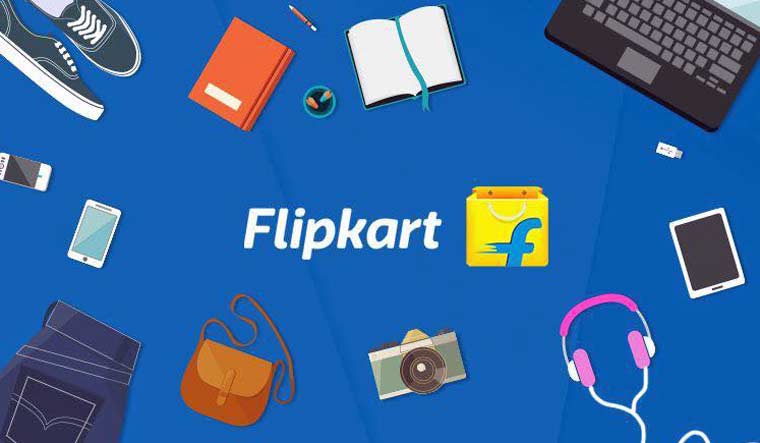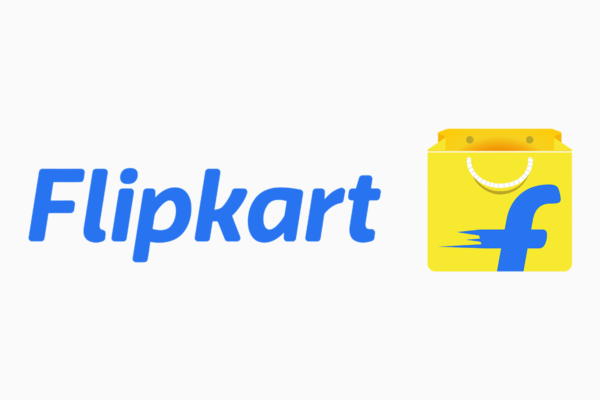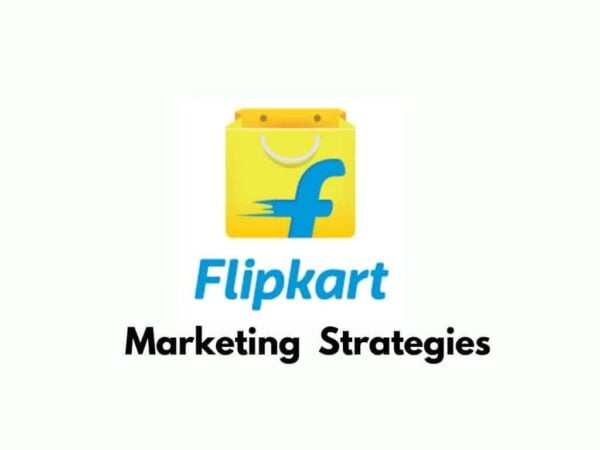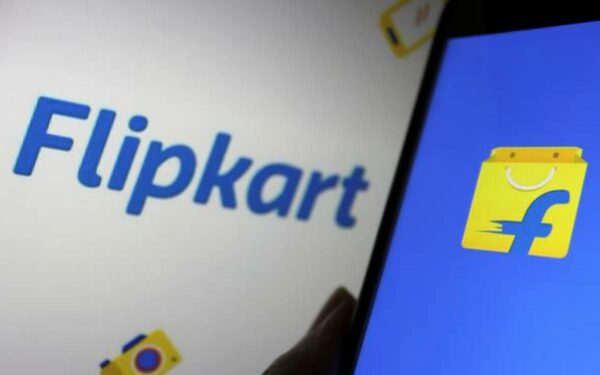Flipkart Marketing Strategy That Made It The Most Popular Indian Ecommerce

Flipkart Marketing Strategy That Made It The Most Popular Indian Ecommerce
The first company that comes to mind as India’s most well-known eCommerce site is Flipkart. Online purchasing made through eCommerce websites is becoming common for both young and older people. It is no longer only a trend.
The top Indian e-commerce site, Flipkart, was established in 2007 by Sachin and Binny Bansal. Bengaluru is home to the company’s headquarters. When Flipkart Group became the industry leader during the holiday sales, RedSeer last calculated its market share at a staggering 62 per cent.

About Flipkart
Binny and Sachin Bansal established the Indian e-commerce business Flipkart in 2007. Flipkart has only had highs since it began selling a range of goods online, much like Amazon. In May 2018, the American retail behemoth Walmart paid $16 billion to buy Flipkart. Walmart, founded by Sam Walton, is renowned for its innovative business approach and its commanding global market position in the retail sector.
Flipkart originally focused on selling books, but the company’s catalogue now includes electronics, fashion, home goods, grocery, and lifestyle categories since more than 1 billion people have used Flipkart to make purchases, India’s top e-retailer.
Additionally, subsidiaries owned by Flipkart include Myntra, PhonePe, eBay, Ekart, Jeeves, and Jabong. On July 2, 2021, Flipkart released Shopsy, an app-like platform that aims to inspire the nation’s businesses to use all the free benefits of digital eCommerce. With a 0% commission from the merchants, the app will reach between 200 and 500 million users who are on a budget.
More than 21 cutting-edge warehouses, 100,000+ sellers, and more than 100 million registered users make up Flipkart. It boasts over 10 million daily page views and over 8 million monthly shipments. Flipkart is a Walmart subsidiary. Currently, Kalyan Krishnamurthy is the CEO of the Flipkart Group.
The company was founded by Sachin Bansal and Binny Bansal in May 2007. Kalyan Krishnamurthy is the company CEO, who was appointed as the company’s CEO in January 2017, when he replaced Binny Bansal.
Sachin Bansal
The other co-founder of Flipkart is Sachin Bansal. Sachin began working for Amazon as a Senior Software Engineer after graduating from IIT Delhi with a Bachelor’s in Computer Science. He had earlier worked briefly for Techspan. Later, he left his job at Amazon and helped launch Flipkart.
After Walmart’s major acquisition of Flipkart in 2018, in which the American multinational firm acquired roughly 77 per cent holdings in the Indian eCommerce company, he managed the roles of CEO and Chairman at Flipkart before stepping down. Bansal eventually co-founded Navi with Ankit Agarwal, where he holds the position of Chairman. As on the Forbes report from 2022, Sachin Bansal’s net worth is $1.30 billion.
Binny Bansal
Like Sachin, Binny is an IIT Delhi alum who earned his bachelor’s degree in computer science and engineering before helping to create Flipkart. Flipkart’s COO and CEO was Binny Bansal.
Since the company’s start, Sachin has been the CEO. In 2016, Binny Bansal assumed that role, and Sachin Bansal was elevated to executive chairman. However, Binny left Flipkart in 2018 due to claims made against Flipkart of personal misbehaviour.
Bansal was the company’s Group CEO. Additionally, Binny has had board advisor positions at many other businesses, including Acko, Blackbuck, GreyOrange, and Udhyam Learning. At the moment, Binny Bansal holds the positions of Executive Chairman and Co-Founder at xto10x Technologies. According to Forbes, in 2022, Binny Bansal will have a net worth of $1.30 billion. In addition to working for the Saas-consultancy startup, Bansal is a member of the PhonePe Board of Directors.
On June 13, 2022, Binny Bansal sold holdings to Tencent for $264 Mn (about Rs 2,060 crore). According to the records, the deal was completed in October 2021 and was only shared at the beginning of FY22. At the conclusion of the transaction, Binny Bansal was in possession of roughly 1.84 per cent of the stakes, while Tencent was in control of 0.72 per cent. The parent company of Flipkart, Flipkart Pte, which is domiciled in Singapore, is owned by the Chinese internet behemoth to the tune of 4-5 per cent.
Stake sales by Binny Bansal are not new. He had earlier sold Tiger Global two interests totalling $90 million in 2019. In the same year, Bansal sold shares to FIT Holdings SARL, a Luxembourg-based company owned and run by Walmart, for a total of $76 million.
Prakash Sikaria, SVP of Growth and Monetization at Flipkart and Head of Shopsy, would leave the company after the festival sales, according to reports from July 22, 2022. Adarsh Menon will now lead the other verticals that Sikaria formerly led, including reCommerce and travel. Koteshwar LN will be in charge of Flipkart Wholesale, the B2B eCommerce division of Flipkart. However, Flipkart has still not decided who they would hire to take over Sikaria’s other duties.
More than 33,000 workers are working for Flipkart.
Startup Story
When Sachin and Binny Bansal, IIT-Delhi grads, started to think about starting their own business in India, they worked as Amazon workers. Even though Sachin had been a long-time employee of Amazon, the latter seemed quite dissatisfied with the company and recommended Binny join the same.
Binny Bansal wanted to leave the company as soon as Sachin, and he came up with the idea of starting an eCommerce business because it was like a “12 to 3 job or something” for him.
Flipkart was founded by Sachin and Binny as an online bookstore out of a two-bedroom flat in Bengaluru’s Kormangala district. They first funded their startup with $4,000,000 from their own funds.
When Sachin and Binny had success selling books back in 2007, they decided to expand to electronics. By 2014, the firm had reached a valuation of $1 billion, making it one of India’s most valuable startups.
When Sachin and Binny launched Flipkart, internet shopping in India was still only a faraway dream for them. However, their dedication and perseverance paid off, and they became wildly wealthy businesspeople who ranked pretty high on the list of successful Indian entrepreneurs.

Flipkart’s Marketing Strategies To Ramp-up The Domestic Sales
Every new business in its infancy must have a key component called risk management or loss management. Currently, Flipkart is the most well-known eCommerce platform in India. It started with books, a product category with large margins, little upkeep, and readily transportable goods. Books are non-perishable items that retain their value throughout time. Early on, when shipments were few, the business did not need to maintain inventory because books could be acquired directly from wholesalers based on the number of customer requests.
As we all know, getting up early always gives you an advantage. Flipkart began by analysing the needs and gaps in the Indian market. Let’s see its strategic marketing tree from every aspect that contributed to its success:

1. Promotional Channels
The following are the promotional channels Flipkart uses as a part of its marketing strategy:
Social Media Marketing: Flipkart must take advantage of effective techniques like social media. Flipkart has a sizable following and places a lot of emphasis on social media in addition to sponsored pages. As of March 2022, the company had approximately 9.7 million Facebook fans, 2.9 million Instagram followers, 2.7 million Twitter followers, etc.
Flipkart has a variety of handles for many goods or categories, like clothing, technology, books, furniture, and even grocery. It uses social media for reviews, questions, and valuable customer input. Trust is gained through quick responses on social media. In social media, it employs moving storylines.
Affiliate Marketing Tactics: Affiliate marketing is performance-based advertising where a person is compensated for suggesting a brand, service, or item from Flipkart. The company gave employees the responsibility of marketing its products in exchange for a cut of the sales revenue. Through their blogs, videos, or other platforms, affiliate programme participants directly or indirectly promote the products. Flipkart provides commission rates ranging from 5 to 15% according to its cash cow products.
Innovative Marketing Campaign: Marketing campaigns with many taglines beefed up sales. Flipkart uses campaigns like “Itne May Itnaaaa Milegaa”, “Budget Se Mukt”, “Gen E, Let’s Raise a Generation of Equals”, and “India ka Fashion Capital”, and “Munna Bhai and Circuit”.
Productive and Eye-Catching Advertisements: Advertising is a game of the mind. However, the billion-dollar online retailer Flipkart struck a balance between celebrity sponsorship and using a fresh face to project a relatable image. Apart from this, it alters ads in accordance with the culture, festivals, and flavours of diverse India so that the average person or non-user may get used to their system. Additionally, it recognised holidays like Independence Day, Women’s Day, or Children’s Day by cutting off advantageous prices for that clientele.
Personal Touch and Commoner’s Brand Image: Since its inception, Flipkart has ensured that founders will surprise deliveries and create gift baskets for specific consumers on occasions. Indians are obsessed with uniqueness, presents, wishes, etc. The company is utilising India’s obsession with Bollywood to increase awareness of its brand, advertise its platform, and market its goods.
To attract the next-gen who are glued to OTT content and “Game of Thrones,” the corporation is now trying to project a “commoner” image. They hardly understand Bollywood.
Google Ads Boosting Sales: Nowadays, consumers use Google to conduct their searches, so if your business isn’t the top outcome, you’re losing out on a major change. Google Ads are unquestionable. The company always considers and focuses on the right keyword combination while advertising, mostly searches and shop promotions. E-commerce platforms can use Google Ads to promote their foundation by showing up on a list of products at different stages of the buying process. SEO copyright tactics aid in achieving high search engine rankings.

2. Customer-Friendly Initiatives
Some of the customer-friendly programmes used by the company as a part of its marketing strategy include the following:
Customer Relationship Management: One of the key elements of a marketing plan is customer relationship management or CRM. Flipkart uses sales force automation, cloud software solutions, demographic analysis, purchasing behaviour, browsing history monitoring, sales lead tracking, and customer loyalty programmes to assist customers in making decisions and guiding them. The customers are the centre of a comprehensive effort to raise awareness and achieve sales targets.
COD and EMI facility: They won over the sceptic Indian customers who had recently learned about the benefit of internet buying thanks to their cash-on-delivery option. Flipkart was one of the few e-commerce businesses to take a COD risk on trial. This allowed customers to receive their items before purchasing to safeguard against India’s many logistical challenges.
Simple EMI alternatives encourage a confused customer to make a purchase. Flipkart convinces the buyer that an EMI will make a purchase more affordable without materially raising their monthly expenses or burdening them.
Out of Cash Options (Buy Today, Pay Later): In this world, Flipkart cannot refuse credit in an emergency, while your closest friend can.
The founders decided to include the “Pay later” option so that more customers could shop on the website after the COD movement. It is one of the best marketing strategies for luring in new customers. You may easily and quickly make purchases online with Pay Later. To take advantage of this opportunity, customers who have been with Flipkart for a long time have been chosen.
Exchange Offer or Bonus Redeem: Offering discounts is one of the best marketing strategies for growing the clientele. Given that everyone likes getting discounts, rich or poor, consumers who get discounts are likelier to stay with a business for a long time. If a business starts by giving a discount, it will dominate the market in the long run. Flipkart has succeeded in the modern internet sector by following this marketing strategy.
Easy Refund and Replacement Policy: If a customer receives a defective, Flipkart provides a product replacement service. In case of a refund, the whole money is credited to the customer’s bank account within 2 to 3 days. This strategy is especially important if an eCommerce platform hopes to remain competitive for a long time and win over customers.
Flipkart Assured and Quality Checked Products: In the beginning, it had problems with unreliable sellers, subpar goods, misplaced goods, and delayed deliveries. Their strategist launched effective campaigns like “Flipkart guaranteed.” The products in their grocery section underwent a 7-step quality assessment. The logistics team has put a lot of effort into reducing product damage across the supply chain.

3. Work Culture and Sellers Satisfaction Strategy
Employees, who are an organisation’s most valuable resource, drive its marketing strategy. A positive workplace environment ensures productivity with robust competition and less corporate politics. The business is renowned for having a paternity policy that accommodates employees.
As the eCommerce behemoth is not the producer but creates a marketplace where buyers and sellers can interact, the seller or supplier is the most important link in the overall logistic chain. Therefore, it’s critical to have happy vendors to reduce concerns about product quality. An effective marketing plan aims to make the customers happy, which a good seller will guarantee. Because it values its customers and vendors equally, Walmart’s Flipkart is a successful and well-known platform.

4. Efficient Distribution Channel Strategy
In India, Flipkart has close to 70 warehouses where it can store goods after receiving them from merchants and quickly deliver them to customers. Other hubs for packaging, branding, sorting, and other tasks are available on Flipkart. Choosing a reliable and effective distribution system and chain can help you achieve your marketing strategy’s aim of ensuring quick delivery to gain customers’ trust.

5. Flipkart’s Expansion Strategy
In addition to being a method to lessen competition, mergers and acquisitions or business buyouts are effective marketing tactics. Flipkart bought many of its minor rivals to stifle competition. Other times, the company bought rivals to get an edge in logistics or to enter a new market. Like, to compete with competitors, it bought ANS Commerce, eBay India, and Myntra (the leader in the online fashion business). The company has agreements with the ticketing app Cleartrip and the medical platform SastaSundar as part of its diversification strategy. This raises the platform in the public’s mind, making it an amazing marketing tactic.
So, Flipkart is the big fish that eats little fish for its diversified expansion.

STP Analysis of Marketing
A balanced approach is selected for the STP (Segmentation, Targeting, and Positioning) examination of Flipkart segmentation, pricing, and targeting. Similar to how the pricing varies by brand and product quality. However, it asserts that many items are priced below MSRP and at discounts.
Flipkart uses behavioural and psychographic segmentation strategies to divide the market and adjust to changing customer needs and preferences.

Flipkart and The Covid19 Battle
The unprecedented difficulty became a profitable chance for Flipkart. The organisation originally experienced issues with the culture of working from home, a systematic shift in people and technological resources, and a failing delivery system due to lockdown.
However, every gloomy cloud has a bright spot. It established the Program Management Team and made the touchless distribution of cash possible. During the problematic pandemic, the Flipkart family provided for its staff, merchants, front-line workers, and customers. For efficient delivery, the business partnered with Uber drivers. The Walmart-owned business announced a donation of 46 crore worth of medical supplies for India to aid the country’s common people to escape the internal ecosystem. Their safety concerns are raised by internal immunisation drives, COVID standards, or full employee insurance.
Conclusion
Flipkart is what it is now because of the aforementioned marketing techniques, including social media marketing, catchy campaigns, commercials and bonus redemption. This firm, which just started as a platform for selling books, is now dominating the Indian eCommerce sector because of its clever marketing tactics. As a result, the platform has come a long way since its start and works hard to continue competing at the top of its game.
edited and proofread by nikita sharma




